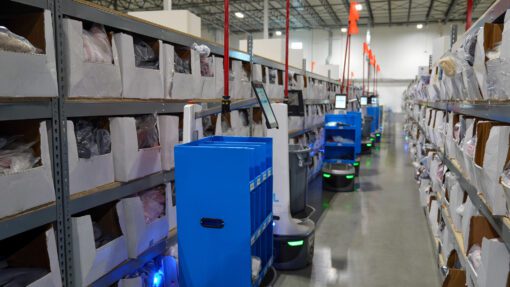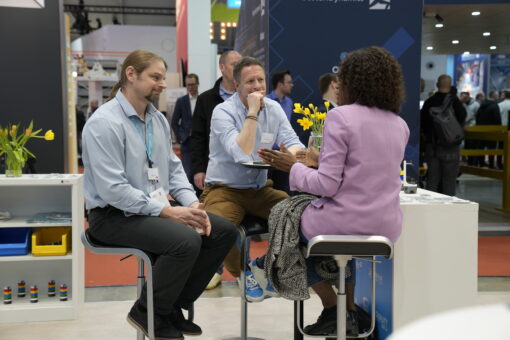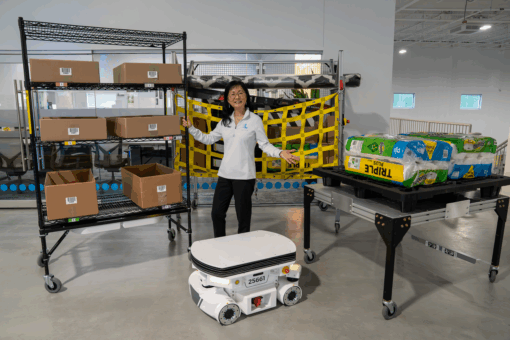WP: How to achieve 400 UPH with Locus Fast Pick
WP: How to achieve 400 UPH with Locus Fast Pick Download Now!
Choosing the Right 3PL Partner: A Fulfillment Playbook for Retail Brands
Mary Hart, Sr. Content Marketing Manager

Fast-growing e-commerce brands can’t afford fulfillment missteps. In an era where delivery expectations are shrinking and channel complexity is rising, the third-party logistics (3PL) partner you choose plays a direct role in your ability to scale.
Yet many retail and eCommerce brands still approach 3PL selection like it’s a basic cost comparison exercise and simply focus on square footage rates. That approach misses the bigger picture.
On a recent episode of the “Warehouse Automation Matters” podcast, I spoke with Chris Caouette, Chief Revenue Officer at North Bay Distribution, about what really matters when choosing a 3PL today. His advice was clear: if your partner can’t flex with your business, your brand will be the one left scrambling.
This playbook captures the key lessons from that conversation. From stability to scalability, here’s how to evaluate your next 3PL partner, and why automation should be on the road map.
1: Look Beyond the 3PL Line Item and Measure Total Landing Cost
Too often, brands shop for 3PLs based solely on line-item pricing. But that misses the real costs:
- Inaccurate shipments = lost customers
- Manual labor = higher overhead
- Delayed fulfillment = more returns
Instead, evaluate total landing costs, which entail:
- Inbound freight + warehouse handling
- Tech integration + support
- Order accuracy + shipping performance
- Hidden soft costs from errors or churn
“The lowest pick fee isn’t your lowest cost. Accuracy and automation are what drive true savings.” – Chris Caouette
2: Ask 3PLs About Tech Stack Maturity
Your 3PL should feel more like a technology partner than a warehouse vendor. How do you find a true technology partner? Look for:
- A configurable, API-friendly WMS
- Support for B2B, DTC, marketplace, and dropship
- Real-time dashboards and visibility tools
- Middleware for seamless Shopify, EDI, or ERP connections
North Bay’s team integrates with brand systems from day one, and even before the contract is signed, to ensure clean data and reliable order flow.
3: Don’t Wait for Automation | Plan for It Now
If your 3PL doesn’t yet have a fully automated warehouse, they should at least be looking into and preparing for automation.
Warehouse automation matters because it:
- Supports peak volumes without growing headcount
- Reduces human error in high-SKU environments
- Speeds up order cycle times
- Frees labor for more complex or oversized items
Look for autonomous robots, system-directed workflows, and on-demand packaging. The best partners already use automation in parts of their operation and have a roadmap to expand it.
4: Prioritize Integration and Onboarding
Speed and accuracy should be the focus for each part of your 3PL’s warehouse operations, including picking, packing, and upstream to receiving.
Evaluate how your 3PL handles:
- Inbound POs and receiving accuracy
- Inventory tracking and cycle counts
- Barcode consistency and scanning protocols
- Custom packaging and labeling requirements
“A lot of downstream issues are caused upstream. If your inventory isn’t accurate, nothing else will be.” – Chris Caouette
5: Build for Omnichannel and Scalability
Today’s brands need flexibility. Your 3PL should support:
- Multichannel fulfillment (e-comm, wholesale, marketplace, retail)
- Multi-node strategies to reach 95%+ of the U.S. within 2–3 days
- Ecosystem partnerships for specialized fulfillment (e.g., frozen, hazmat)
And when you grow, your 3PL should be ready to grow with you.
6: The 3PL Partnership Checklist
Before you sign with any provider, ask yourself:
- Do they offer full visibility and control through modern tech?
- Are they automation-ready or are they already using it?
- Do they treat customer success like an extension of your team?
- Have they weathered disruption and emerged stronger?
- Can they scale with your product mix and growth trajectory?
Build with Warehouse Agility
Choosing the right 3PL is about logistics and safeguarding your customer experience, protecting your profit margins, and preparing your operations for what’s next. That requires a partner with operational maturity, technical capability, and a willingness to evolve alongside your brand.
Whether it’s integrating seamlessly with your Shopify store, supporting omnichannel fulfillment, or bringing automation into the mix, the 3PLs that stand out today are those built for tomorrow.
When done right, your logistics partner is picking, packing and actively helping your business scale.
To hear the full conversation with Chris Caouette, listen to the latest episode of the Warehouse Automation Matters podcast.




